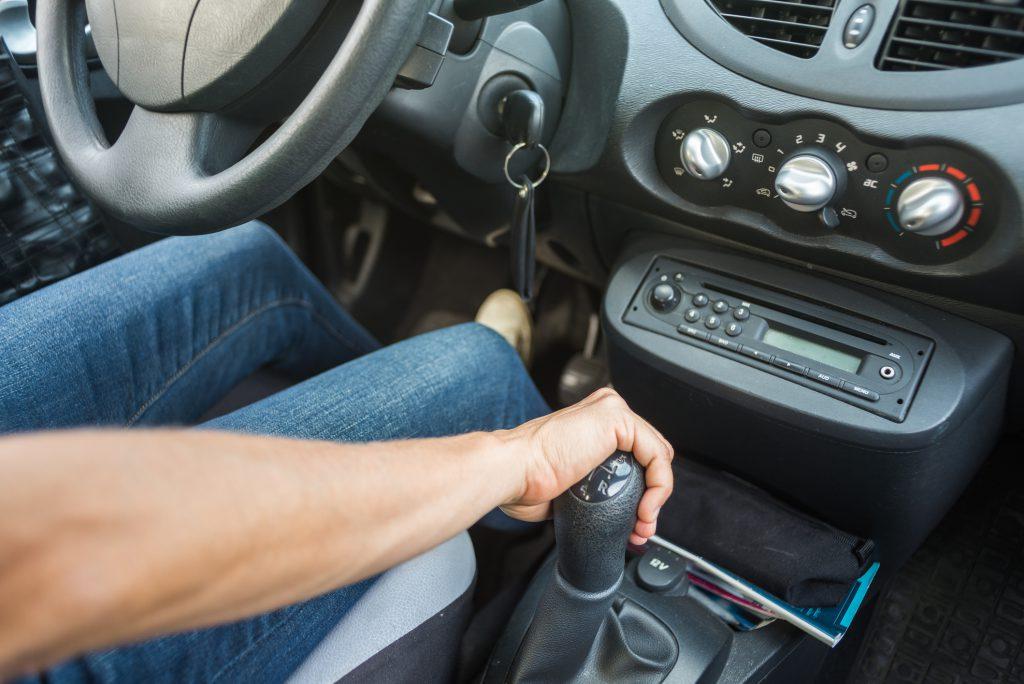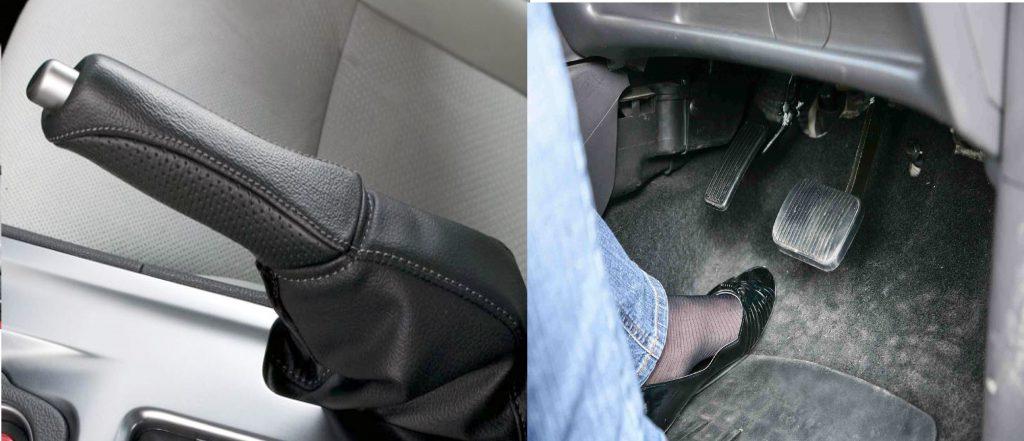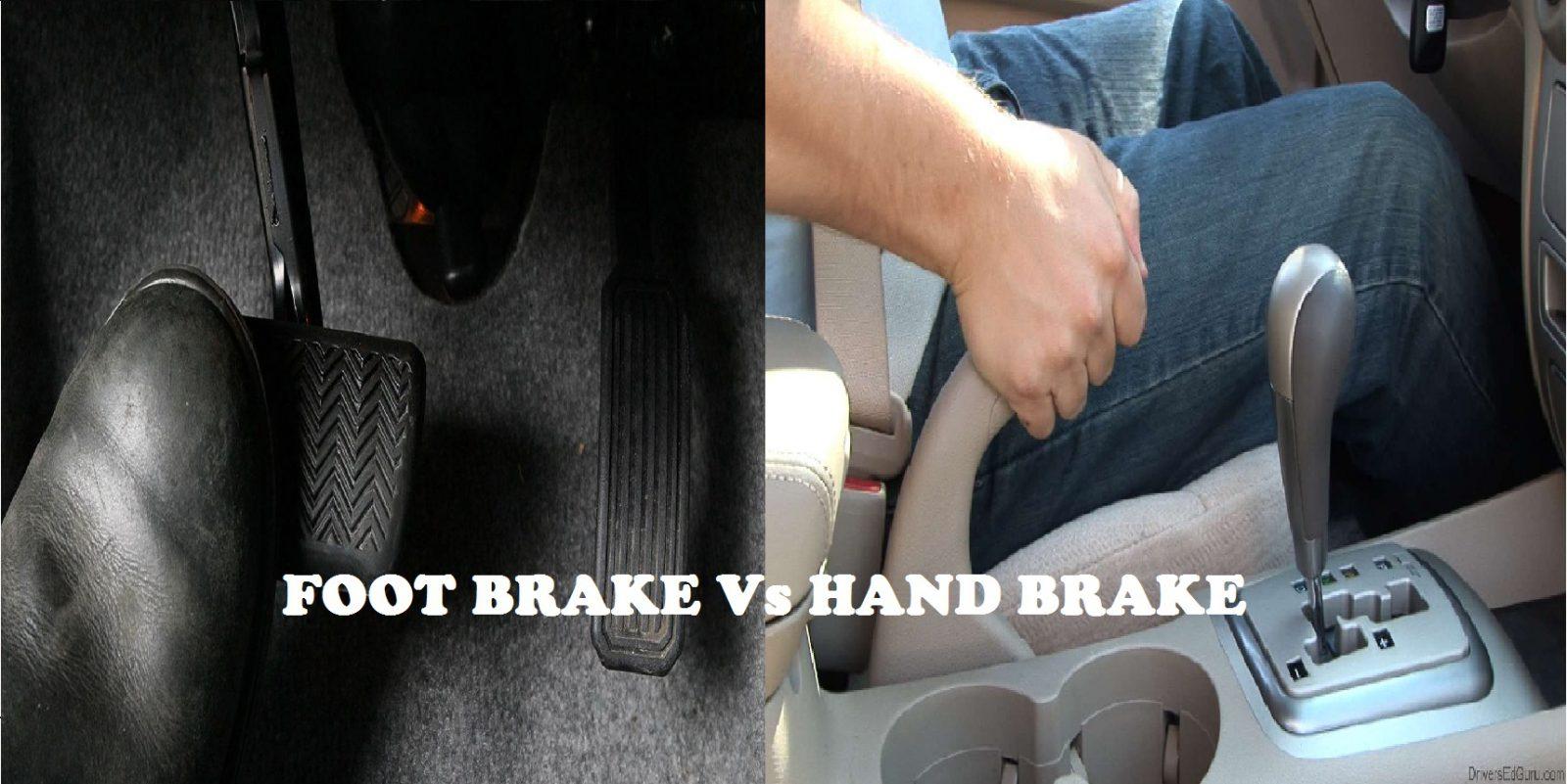All car drivers and learners know how to use foot brake and handbrake. Even the non-learners are aware of their operation. But, how many are aware of the working mechanisms of braking using the pedal and the handbrake? We guess, very few!
So, without any delay, let’s find the actual difference between these two types of brakes along with their appropriate usage.
Contents
Foot Brake and Handbrake: The Real Difference
If you have always been looking for the answer to “When should I use handbrakes and foot brakes,” then delve deeper into their mechanisms and find the appropriate answer?
1. Overview
So you may now wonder what is a foot brake and handbrake? Here are the answers for you!
Commencing with the foot brake system is a pedal connected to a vacuum booster, which is used to stop or slow down the vehicle’s motor.
This is known as the system of hydraulic brakes that multiplies the foot force applied to stop the car weighing several tons.
Whereas, the handbrake, also known as the parking brake, or emergency brake; is a straight pull handle near the steering column. This can also be a hand-operated lever at floor level next to the driver, or a foot brake pedal located beside the leg of the driver.
Simply put, this means it can be in any of the above-defined forms in a car but is used only during an emergency stop or when the vehicle is in a stationary state.
SEE MORE:
2. Mechanical Difference
We will now get into more detail on the mechanical differences between the foot brake and handbrake.
Foot Brakes
The foot or service brakes work differently. When the power brake is applied, the force is transferred to the master cylinder.
This cylinder then generates a compressive force on the hydraulic liquid that passes through the brake lines to its caliper.
Pushing the caliper against the brake rotor, the liquid assists in slowing down the rotation of the wheel.
-

The foot or service brakes work differently. (Photo: Fabio Lamanna) In the case of drum brakes, the same effect is seen; the only difference is that the brake drums are pushed against the two shoes by the piston.
Every time, when the driver steps on the brake pedal; the hydraulic force is distributed between the front and rear wheels.
On average, 75% of the force is received on the front wheels while 25% is received on the rear car wheels.
Handbrake
In most cars, the hand or parking brake is a mechanical device that doesn’t depend on stored energy and is capable enough to deplete hydraulic circuits or compressed air.
When the handbrake is brought into action, it operates only via the piston in the caliper or on the dedicated shoe brake inside the rear rotor. In other words, parking brakes are dedicated only to the rear wheels.
3. Wear and Tear
Excessive usage of the handbrake while driving can lead to unnecessary wear and tear on the rear brakes.
Unlike the foot brake in car, which is specifically designed for regular use during driving, the handbrake should be reserved for specific situations like parking on slopes and emergency braking.
When the handbrake is engaged while the vehicle is in motion, it applies pressure to the rear wheels only, causing uneven braking.
This uneven braking can lead to increased wear on the rear brake pads or shoes, as they bear the brunt of the braking force.
Additionally, the handbrake is not equipped to handle the same level of braking power as the foot brake, and prolonged use while driving can strain the rear braking system.
Check out this video from Conduite Facile to learn more about 5 tips for new drivers using Handbrake!
Frequent and prolonged application of the handbrake while driving can generate excessive heat, leading to premature wear and reduced braking efficiency.
On the other hand, the car foot brake is designed to handle the demands of regular braking during driving. It distributes the braking force evenly among all four wheels, ensuring consistent and balanced braking performance.
The foot brake is capable of exerting substantial force on the wheels, making it suitable for emergency stops and everyday driving situations.
To preserve the longevity and effectiveness of both the foot brake and handbrake, it is essential to use them as intended. Avoid using the handbrake while the vehicle is in motion unless it is an emergency where the foot parking brake has failed.
For routine driving and regular braking, rely on the foot brakes, allowing them to efficiently slow down or stop the vehicle without causing undue wear on the rear brakes.
4. Appropriate Use
When it comes to handbrake, the usage depends on the situation. For instance, they are mostly used during a vehicle’s parking or when you have to stop at traffic lights (in this situation, put the car in neutral gear).
Besides this, on hill start (sharp slope- upward or backward), the brake helps against rolling forward or backward.
On the other side, the pedal brake is mainly used to slow down or completely stop the moving car.
-

When it comes to handbrake, the usage depends on the situation. (Photo: vartec) Tips for Proper Foot Brake and Handbrake Usage
- Avoid sudden and aggressive braking, as it can lead to skidding and loss of control.
- In wet or slippery conditions, increase the following distance and apply the brakes gently.
- Perform regular maintenance on the braking system to ensure optimal performance.
- Use the handbrake when parking on slopes to prevent unnecessary strain on the foot brake.
- Familiarize yourself with the location and operation of both brakes in your vehicle.
FAQs on Foot Brake and HandBrake
1. Can I use the handbrake while driving?
Using the handbrake while driving is not recommended, as it can cause uneven braking and compromise stability.
2. Does the handbrake replace the foot brake in emergencies?
While the handbrake can serve as a backup in emergencies, the foot brake remains the primary braking system for rapid stops.
3. How often should I check my vehicle’s braking system?
Regularly inspect and service your vehicle’s braking system, preferably during routine maintenance or as recommended by the manufacturer.
4. Can I use the foot brake for parking on inclines?
While the foot brake can help keep the vehicle stationary on mild slopes, it is not as effective as the handbrake for steep inclines.
5. Is it necessary to engage the handbrake when parked on level ground?
Engaging the handbrake on level ground provides an extra layer of safety, especially if the vehicle is parked for an extended period.
Check out this video from O’Reilly Auto Parts to see when you need to replace your car’s brakes!
Conclusion
Understanding the differences between the foot brake and handbrake is crucial for safe and effective driving.
While the foot brake offers powerful and responsive braking for regular driving, the handbrake serves as a reliable option for parking on inclines and in emergencies.
Both brakes complement each other, and knowing when to use them appropriately enhances overall driving safety and control. By following proper braking practices and maintaining the braking system, drivers can ensure a smoother and safer journey.




Toyota crown. GRS 180. Thump noise when engaging from drive to REVERSE gear. I have changed the VALVE BODY. The thumping noise is still around. Do i need to change whole gear system. Please advise.
Wily